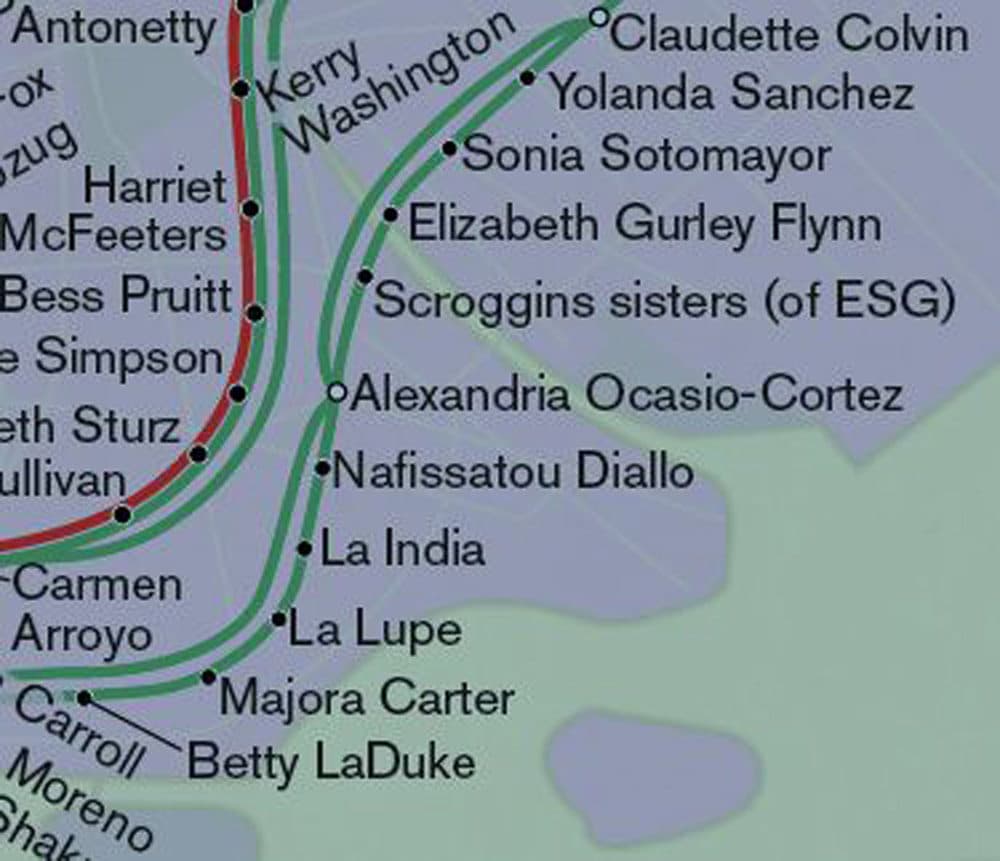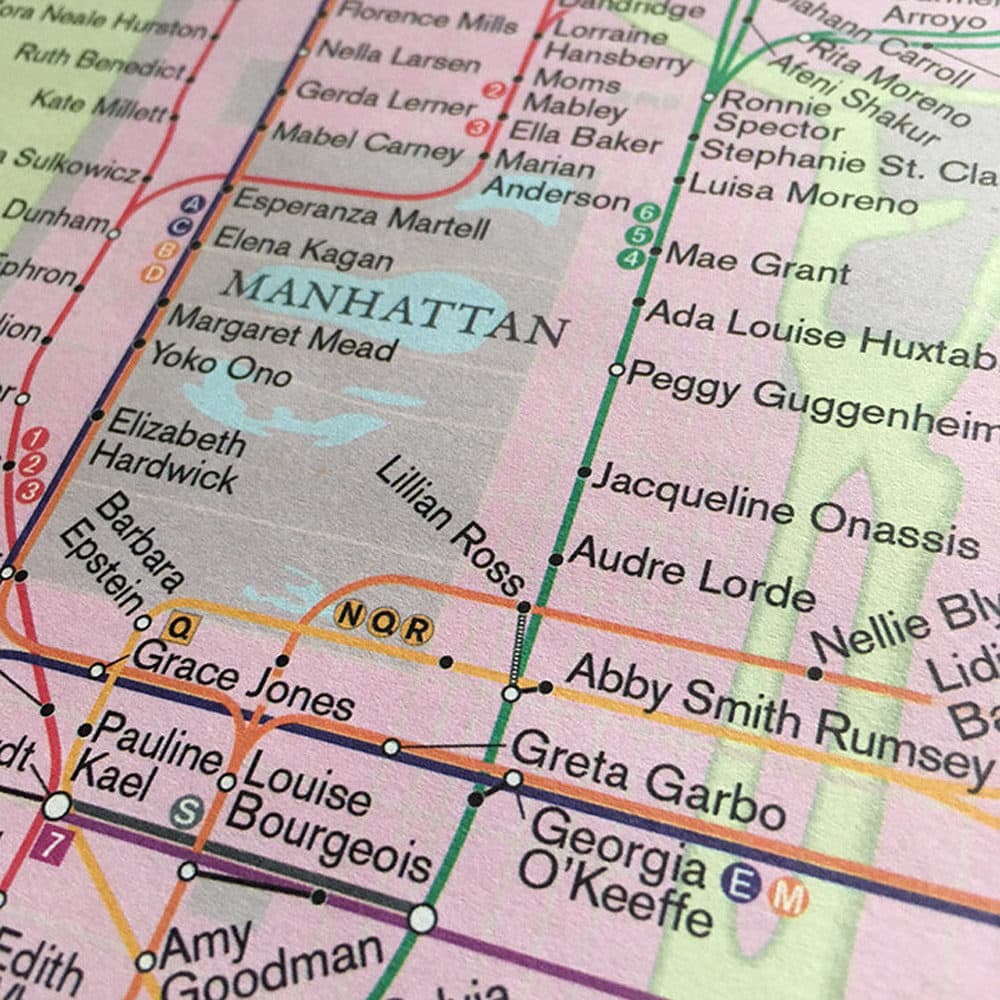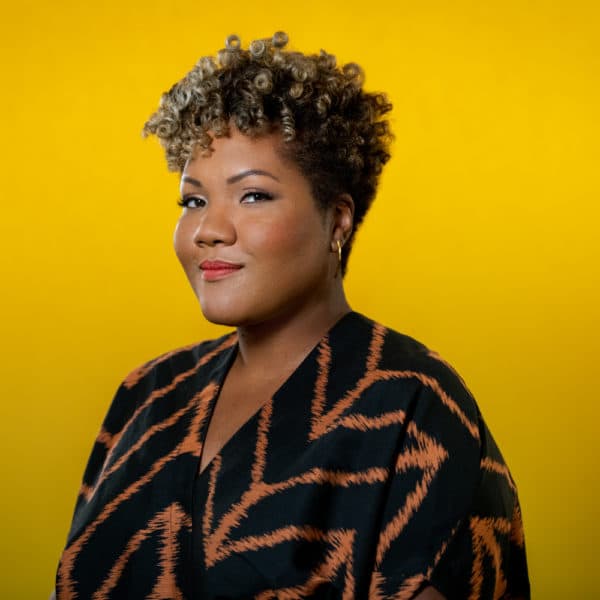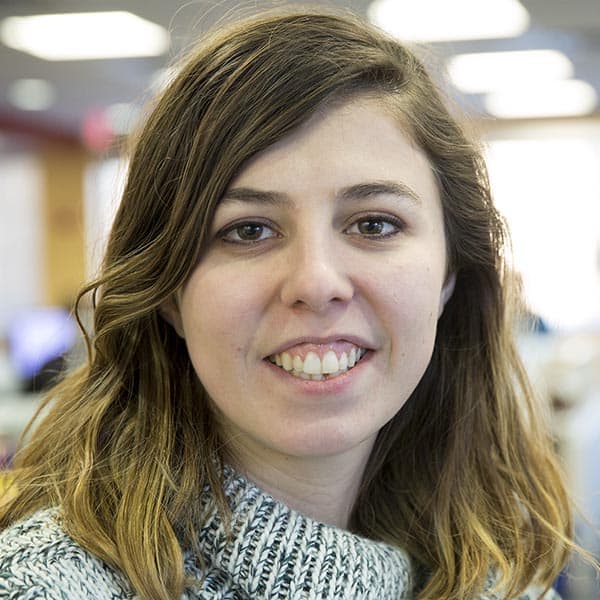Advertisement
Grab The Train At Grace Jones, Get Off At Yoko Ono: Exploring NYC's New 'City Of Women' Map

If you look at a map of the United States, you might think that only men live here.
Writer Rebecca Solnit once said, “The peaks of our mountains sound like a board of directors of an old corporation.”
And nowhere is manscaping more on display than in New York City, where there are 200 plus statues and landmarks named after men in history, including the Lincoln Center, Columbus Circle and Rockefeller Center, to name a few. Meanwhile, the most prominent woman is the Statue of Liberty, which isn’t even based on a real person.
The lack of women on display sparked the idea behind the “City of Women” map, which renames each of New York’s 424 subway stops after famous women who lived, worked or reveled there. The map was created in 2016 by Solnit and geographer Joshua Jelly-Schapiro, and it was just updated to include more famous women, including Rep. Alexandria Ocasio-Cortez.
“Our map was also designed as a kind of intervention in a conversation that's really picked up steam in the last few years about gender and public space and the ways in which our names and our public spaces do honor and welcome a certain segment of the population that may not feel as welcoming to others,” Jelly-Schapiro says.

The women on this map run the gamut, Jelly-Schapiro says. In Queens, the subway stop near the U.S. Open stadium is named after Venus and Serena Williams. Out in Bayside, Queens, the map honors the three ladies of seminal hip-hop group Salt-N-Pepa.
“A lot of it was also just contacting local people and sort of community leaders and saying, 'Who in your area deserves to be recognized?' ” Jelly-Schapiro says.
“We wanted it to be a mix,” he adds. “We wanted to have the politicians — the Elizabeth Holtzmans or Bella Abzugs — but also absolutely entertainers, singers, community activists, curators.”
Jelly-Schapiro says this map is really so powerful in making women more visible because the map of the subway “is the map of New York City that New Yorkers know best.”
“It's fabulous fun now all the time to think about giving directions or getting around the city by saying, 'I'm going to get on the train at Grace Jones and get off at Yoko Ono,' ” he says.
Advertisement
The map has had an impact on people of all genders, not just women, which Jelly-Schapiro says he didn’t expect.
“It's shown me the sort of the power of representation and the ways in which it matters to see ourselves and people we recognize and admire recognized in public,” he says.
Cassady Rosenblum produced and edited this interview for broadcast with Kathleen McKenna. Samantha Raphelson adapted it for the web.
This segment aired on October 4, 2019.

